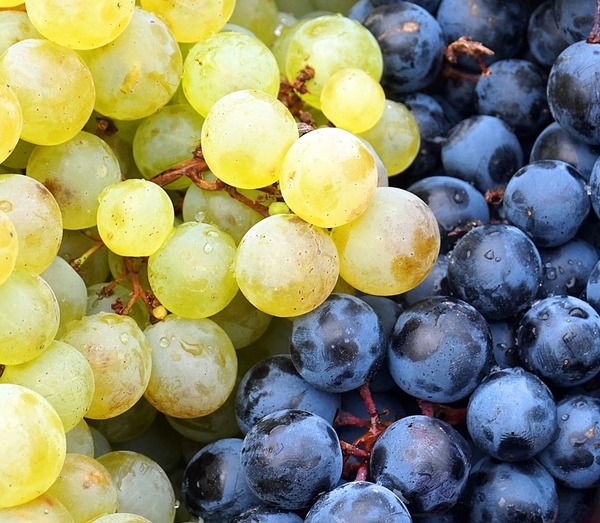Just In
- 37 min ago

- 3 hrs ago

- 4 hrs ago

- 5 hrs ago

Don't Miss
- Sports
 Mumbai Indians batting coach Kieron Pollard and Tim David fined for illegal help vs Punjab Kings
Mumbai Indians batting coach Kieron Pollard and Tim David fined for illegal help vs Punjab Kings - News
 Soumya Vishwanathan Murder Case: Mother Opposes Bail For Convicts; Hearing On April 22
Soumya Vishwanathan Murder Case: Mother Opposes Bail For Convicts; Hearing On April 22 - Movies
 Thug Life Release Date Update: Kamal Haasan-Mani Ratnam's Epic Drama To Hit Screens In 2025 On This Date?
Thug Life Release Date Update: Kamal Haasan-Mani Ratnam's Epic Drama To Hit Screens In 2025 On This Date? - Education
 UPMSP Class 10 and 12 Results 2024 to be Released Today, Check the Details Here
UPMSP Class 10 and 12 Results 2024 to be Released Today, Check the Details Here - Finance
 Want To Be Debt Free? 5 Simple Ways To Repay Your Loan Faster
Want To Be Debt Free? 5 Simple Ways To Repay Your Loan Faster - Automobiles
 Tesla CEO Elon Musk's Much-Awaited Visit to India Deferred, Leaving Questions Unanswered
Tesla CEO Elon Musk's Much-Awaited Visit to India Deferred, Leaving Questions Unanswered - Technology
 Garena Free Fire Max Redeem Codes for April 20, 2024: Get Access to the Latest In-game Loot
Garena Free Fire Max Redeem Codes for April 20, 2024: Get Access to the Latest In-game Loot - Travel
 Journey From Delhi To Ooty: Top Transport Options And Attractions
Journey From Delhi To Ooty: Top Transport Options And Attractions
Wine 101: White Wine Vs Red Wine And Everything A Wine Enthusiast Should Know
Since ages, wine has been used not only for recreational purposes but also for various health conditions. Made from fermented grape juice, the flavourful drink is one of the best ways to incorporate fun and health. Moderate consumption of wine can be attributed to long life, protection against cancer and improved mental health [1] . One such benefit of drinking wine can be attributed to the risky lifestyle of French people which in normal cases can result in death from coronary heart disease. However, the common use of wine during meals result in the country having fewer cases of heart disease-related deaths [2] .

The amazing benefits of wine are not something found by the modern world because research conducted at the Harvard University revealed that a jar in the tomb of King Scorpion I, dating back to 3150 BC was found with traces of wine along with some herbal residue [3] . Well, looks like we are not the only ones who know of the benefits of wine! Drank all around the world, wine has a special place in one's life. From lifting up your mood to improving the function of your heart, the zestful drink comes in five basic types - red wine, white wine, rose wine, sparkling wine and fortified wine [4] .
Today, we will take a deep-seated look at the most common varieties of wine, red and white and seek out which variety holds better health benefits in comparison.
Differences Between White Wine And Red Wine
The first thing that comes to everyone's mind while talking about the differences between white wine and red wine is the colour difference as the name suggests. But it is not just that!
Different types of grapes
White wine and red wine are made with different type of grapes. While red wines are made with red grapes, white wines are made with white grapes. The colour of the grapes used is the main difference between the varieties. Pinot Noir and Cabernet Sauvignon are some of the red wine types and Chardonnay, Pinot Grigio, etc., are white wine varieties [5] .
Different parts of the grapes
Both white wine and red wine are made using different parts from the grapes. That is, while red wines are fermented with the grape skins and seeds, white wines are not. The skin and the seeds of the grapes give the red wine its dark colour. To make white wine, the grapes are pressed and the seeds, skin and stems are removed before the fermentation process [6] .
For the preparation of some white wines however, the white grapes are fermented with the skins and seeds. Wines made using this technique are referred to as Orange Wines and have a taste similar to that of red wines, and this technique is rarely used [5] .
Different wine-making methods
The soft, rich, and velvety flavours of red wine and zesty acidity, floral aromas, and pure fruit notes of wine wines are acquired through the different methods adopted for wine-making. The major difference between red wine-making and white wine-making is the oxidation process. Red wine is produced through oxidation, which causes the wine to lose the floral and fruit notes in exchange for rich, nutty flavours and an increased smooth finish [6] .
By using oak barrels, the oxygen levels are increased which allows the wine to breathe and get combined with the oxygen, therefore resulting in red wine getting its rich flavour. In the case of white wine production, the exposure to oxygen is reduced by using stainless steel tanks, which ensures fruitiness and flower flavours of the wine [5] , [7] .

Nutrition Comparison Between White Wine And Red Wine
Although both types of wine have the similar nutrients, there is a difference between red wine and white wine nutritional values [8] , [9] .
| Nutrients | White Wine (100g) | Red Wine (100g) |
| Calories | 82 kcal | 85 kcal |
| Total Carbohydrates | 2.6g | 2.6 g |
| Sugar | 1 g | 0.6 g |
| Protein | 0.1 g | 0.1 g |
| Sodium | 5 g | 4 mg |
| Potassium | 71 mg | 127 mg |
| Magnesium | 71 mg | 127 mg |
| Iron | 0.5 mg | 1 mg |
| Vitamin B6 | 7 mg | 7 mg |
Upon comparing the nutritional value of red wine and white wine, it is easily understandable that red wine has higher amounts of some vitamins and minerals. However, white wine has a fewer amount of calories.

Pros Of Drinking White Wine
Some of the major health benefits of drinking white wine are as follows [10] , [11] , [12] :
Improves lung function: Drinking white wine is associated with improved lung function. The antioxidants present in white wine help to keep the tissues healthy and thereby promote unhindered breathing. According to a study conducted by the University of Buffalo, it was revealed that the nutrients in white wine have the ability to improve the health of your lungs and keep it functioning well.
Protects heart: A recent study revealed that drinking white wine is beneficial for your heart health. It helps to decrease the chance of contracting heart disease by up to 25 per cent.
Aids weight loss: The antioxidants epicatechin, quercetin, and resveratrol in white wine help you shed that extra weight. These antioxidants help trim the extra far from your waistline. Drinking one or two glasses of white wine per day help promote weight loss in a healthy manner.
Prevents disease: One of the other major benefits of drinking white wine is that it helps prevent the onset of certain diseases. The flavonoids in white wine possess antioxidant properties which help protect your body against some forms of cancer, especially bowel cancer.

Click here to read more about the health benefits of white wine.
Cons Of Drinking White Wine
- Drinking excessive amounts of white wine can reverse your journey to weight loss as the calories can cause unwanted weight gain [13] .
- Excessive drinking can lead to alcoholism and alcohol poisoning.
- In some cases, it can cause pancreatitis.
- Individuals with heart conditions should drink white wine in a controlled manner as it causes high blood pressure, stroke, heart muscle damage and sudden death [14] .
- It is best for pregnant women to stay away from drinking white wine as it can cause foetal alcohol syndrome [13] .
- White wines are acidic and can be bad for your teeth.
Pros Of Drinking Red Wine
Some of the major benefits of drinking red wine are as follows [15] , [16] , [17] , [18] :
Boosts heart health: The polyphenols, resveratrol and quercetin present in red wine have the ability to protect your heart against cardiovascular diseases. The antioxidant nutrients in red wine help slow down the progression of atherosclerosis. Controlled intake of red wine help reduce cardiac mortality and the resveratrol shields your heart cells from tissue damage after a stroke, inhibits platelet build-up, and decreases triglyceride and cholesterol accumulation as well.
Manages diabetes: Drinking red wine can help slow down the passing of glucose through the small intestine and then to the bloodstream. This slow down help prevents the spike in blood sugar levels in patients with type 2 diabetes. It is even incorporated in a diabetic diet plan, due to the benefits red wine possesses.
Manages cholesterol: Controlled consumption of red wine can help improve the levels of good HDL cholesterol and lower the bad LDL cholesterol levels. This in turn help reduce the risk of developing cardiovascular diseases.

Fights obesity: The compound piceatannol present in red grapes has a chemical structure similar to resveratrol. Piceatannol helps fight obesity and weight gain by blocking the fat cells' development and growth.
Fights free radical damage: One of the other major benefits of drinking red wine is that it prevents the accumulation of free radicals that can cause chronic and degenerative diseases, including cancer, autoimmune diseases, rheumatoid arthritis, cardiovascular disease and neurodegenerative diseases. The presence of antioxidants also plays a major role in fighting free radical damage.
Some of the other major pros of drinking red wine are it eases joint pain, may slow down cognitive decline, prevent the onset of cancer, and extend lifespan by preventing the onset of age-related diseases [17] .

Cons Of Drinking Red Wine
- Drinking too much can increase your risk of contracting infectious diseases, as it may weaken your immune system [19] .
- Purifiers used in the wine can cause abdominal pain, diarrhoea, and even asthmatic reactions.
- Chronic drinking can damage your internal organs.
White Wine Vs Red Wine: Which Is Healthier?
Some of the studies have pointed out that drinking wine is more beneficial to your health than drinking liquor or beer. Now that we have gone around the pros and cons of both white wine and red wine, and compared the nutritional benefits, it can be ascertained that one is better in terms of health than the other [3] , [20] . And after examining and assessing between the benefits as well as the side effects possessed by both white wine and red wine, it can be asserted that red wine is the clear winner! Well, it doesn't mean that white wine is bad for your health or that it does not have any benefits to your body.
Both red and white wine can be good for your health when consumed in a controlled and moderate manner. However, when compared to white wine, red wine is increasingly beneficial to your heart health due to the presence of the antioxidant resveratrol [21] . White wine, although has antioxidants, is in a limited quantity as the skin of grapes are removed after the grapes are crushed.

Red wine contains polyphenols that help fight premature ageing, which white wine does not possess [20] .
In the case of calories, a glass of white wine has a comparatively less amount of 121 calories whereas red wine has 127 calories [22] .
Red wine has higher levels of silicon than white wine, making it an effective benefactor of your bone health. In comparison to white wine, red wine help increase bone density and reduce the risks of osteoporosis.
Going over the benefits as well as the side effects possessed by red wine and white wine, one can easily point out that red wine outweighs white wine in several parts. From improving your heart health to reducing the risk of osteoporosis, moderate consumption of red wine can benefit your health in so many ways [23] .
So, if you are looking for a healthier option between the two drinks, red wine is your answer! The rich, smooth and velvety texture of red wine packed with a plethora of benefits is a fun-healthy addition to your diet.
Downsides Of Drinking Wine
Everything that comes with a benefit is bound to have a negative side to it, and wine is no different. Though red wine, as well as white wine, has certain benefits accorded to it, consumption of alcohol as a means to improve one's health should never be advocated - because of the abundance of harmful effects excessive and uncontrolled alcohol consumption can have on your body and mind [24] . The risks of excessive alcohol consumption vary from liver and heart failure to death, so it is critical that you maintain your consumption levels to a minimum. Drinking a glass of red wine per day is the optimum amount, however, two glasses also cannot hurt.

Heavy drinking can result in the damage of your organs because red wine itself is a neurotoxin that can poison your brain and liver. Chronic heavy drinking, according to recent studies, has been linked with breast cancer risk. The study revealed that women who increased their alcohol consumption faced a higher risk of breast cancer [25] , [26] .
One of the other side effects of wine consumption is that the artificial ingredients like aroma enhancers, stabilizers and clarifying agents that are used to enhance the flavour, colour, texture and shelf life of the wine [27] . The sulphites used in wine can cause adverse effects in some individuals such as dermatitis, flushing, abdominal pain, diarrhoea, asthmatic reactions and even life-threatening anaphylaxis [28] .
- [1] German, J. B., & Walzem, R. L. (2000). The health benefits of wine.Annual review of nutrition,20(1), 561-593.
- [2] Xiang, L., Xiao, L., Wang, Y., Li, H., Huang, Z., & He, X. (2014). Health benefits of wine: Don’t expect resveratrol too much.Food chemistry,156, 258-263.
- [3] Yoo, Y. J., Saliba, A. J., MacDonald, J. B., Prenzler, P. D., & Ryan, D. (2013). A cross-cultural study of wine consumers with respect to health benefits of wine.Food Quality and Preference,28(2), 531-538.
- [4] Shrikhande, A. J. (2000). Wine by-products with health benefits.Food Research International,33(6), 469-474.
- [5] Siemann, E. H., & Creasy, L. L. (1992). Concentration of the phytoalexin resveratrol in wine.American Journal of Enology and Viticulture,43(1), 49-52.
- [6] Singleton, V. L., & Trousdale, E. K. (1992). Anthocyanin-tannin interactions explaining differences in polymeric phenols between white and red wines.American Journal of Enology and Viticulture,43(1), 63-70.
- [7] Klatsky, A. L., Armstrong, M. A., & Friedman, G. D. (1997). Red wine, white wine, liquor, beer, and risk for coronary artery disease hospitalization.The American journal of cardiology,80(4), 416-420.
- [8] Wollin, S. D., & Jones, P. J. (2001). Alcohol, red wine and cardiovascular disease.The Journal of nutrition,131(5), 1401-1404.
- [9] Katalinić, V., Milos, M., Modun, D., Musić, I., & Boban, M. (2004). Antioxidant effectiveness of selected wines in comparison with (+)-catechin.Food chemistry,86(4), 593-600.
- [10] Guilford, J. M., & Pezzuto, J. M. (2011). Wine and health: A review.American Journal of Enology and Viticulture,62(4), 471-486.
- [11] Conigrave, K. M., Hu, B. F., Camargo, C. A., Stampfer, M. J., Willett, W. C., & Rimm, E. B. (2001). A prospective study of drinking patterns in relation to risk of type 2 diabetes among men.Diabetes,50(10), 2390-2395.
- [12] Mukamal, K. J., Conigrave, K. M., Mittleman, M. A., Camargo Jr, C. A., Stampfer, M. J., Willett, W. C., & Rimm, E. B. (2003). Roles of drinking pattern and type of alcohol consumed in coronary heart disease in men.New England Journal of Medicine,348(2), 109-118.
- [13] Van de Wiel, A., & De Lange, D. W. (2008). Cardiovascular risk is more related to drinking pattern than to the type of alcoholic drinks.Neth J Med,66(11), 467-473.
- [14] Jarisch, R., & Wantke, F. (1996). Wine and headache.International archives of allergy and immunology,110(1), 7-12.
- [15] Opie, L. H., & Lecour, S. (2007). The red wine hypothesis: from concepts to protective signalling molecules.European heart journal,28(14), 1683-1693.
- [16] Saremi, A., & Arora, R. (2008). The cardiovascular implications of alcohol and red wine.American journal of therapeutics,15(3), 265-277.
- [17] Szmitko, P. E., & Verma, S. (2005). Antiatherogenic potential of red wine: clinician update.American Journal of Physiology-Heart and Circulatory Physiology,288(5), H2023-H2030.
- [18] Ellison, R. C. (2002). Balancing the risks and benefits of moderate drinking.Annals of the New York Academy of Sciences,957(1), 1-6.
- [19] Higgins, L. M., & Llanos, E. (2015). A healthy indulgence? Wine consumers and the health benefits of wine.Wine Economics and Policy,4(1), 3-11.
- [20] Seigneur, M., Bonnet, J., Dorian, B., Benchimol, D., Drouillet, F., Gouverneur, G., ... & Bricaud, H. (1990). Effect of the consumption of alcohol, white wine, and red wine on platelet function and serum lipids.Journal of Applied Cardiology,5(3), 215-222.
- [21] Fuhrman, B., Volkova, N., Suraski, A., & Aviram, M. (2001). White wine with red wine-like properties: increased extraction of grape skin polyphenols improves the antioxidant capacity of the derived white wine.Journal of Agricultural and Food Chemistry,49(7), 3164-3168.
- [22] Whitehead, T. P., Robinson, D., Allaway, S., Syms, J., & Hale, A. (1995). Effect of red wine ingestion on the antioxidant capacity of serum.Clinical Chemistry,41(1), 32-35.
- [23] Pignatelli, P., Ghiselli, A., Buchetti, B., Carnevale, R., Natella, F., Germano, G., ... & Violi, F. (2006). Polyphenols synergistically inhibit oxidative stress in subjects given red and white wine.Atherosclerosis,188(1), 77-83.
- [24] Fuhrman, B., Lavy, A., & Aviram, M. (1995). Consumption of red wine with meals reduces the susceptibility of human plasma and low-density lipoprotein to lipid peroxidation.The American journal of clinical nutrition,61(3), 549-554.
- [25] Siemann, E. H., & Creasy, L. L. (1992). Concentration of the phytoalexin resveratrol in wine.American Journal of Enology and Viticulture,43(1), 49-52.
- [26] Weisse, M. E., Eberly, B., & Person, D. A. (1995). Wine as a digestive aid: comparative antimicrobial effects of bismuth salicylate and red and white wine.Bmj,311(7021), 1657-1660.
- [27] Nigdikar, S. V., Williams, N. R., Griffin, B. A., & Howard, A. N. (1998). Consumption of red wine polyphenols reduces the susceptibility of low-density lipoproteins to oxidation in vivo.The American journal of clinical nutrition,68(2), 258-265.
- [28] Daglia, M., Papetti, A., Grisoli, P., Aceti, C., Dacarro, C., & Gazzani, G. (2007). Antibacterial activity of red and white wine against oral streptococci.Journal of Agricultural and Food Chemistry,55(13), 5038-5042.
-
 wellnessHeadache After Drinking Red Wine? This May Be The Reason!
wellnessHeadache After Drinking Red Wine? This May Be The Reason! -
 beautyNon-Alcoholic Wine: Your Key To Age-Defying Skin
beautyNon-Alcoholic Wine: Your Key To Age-Defying Skin -
 healthMyths vs Facts: Can People With Diabetes Drink Wine? If Yes, How Much?
healthMyths vs Facts: Can People With Diabetes Drink Wine? If Yes, How Much? -
 pulse5 Wines To Order On Your Next Date Night
pulse5 Wines To Order On Your Next Date Night -
 wellnessWhat Happens When You Drink Two Glasses Of Wine Before Sleep?
wellnessWhat Happens When You Drink Two Glasses Of Wine Before Sleep? -
 wellnessLove Wine? We May Have Bad News For You: 5 Signs You Should Stop Drinking Wine; Alcohol Addiction Helpline
wellnessLove Wine? We May Have Bad News For You: 5 Signs You Should Stop Drinking Wine; Alcohol Addiction Helpline -
 wellnessPlanning to Kick-Start Valentine's Day Eve With A Bit Of Wine? Know Its Health Benefits
wellnessPlanning to Kick-Start Valentine's Day Eve With A Bit Of Wine? Know Its Health Benefits -
 disorders cureEverything You Need To Know About Wine Allergy
disorders cureEverything You Need To Know About Wine Allergy -
 nutritionNot A Fan Of Alcohol? Here Are 10 Non-Alcoholic Substitutes For Wine
nutritionNot A Fan Of Alcohol? Here Are 10 Non-Alcoholic Substitutes For Wine -
 nutritionCan Drinking Wine Really Help You Live Longer? New Study Reveals
nutritionCan Drinking Wine Really Help You Live Longer? New Study Reveals -
 wellness10 Surprising Factors That Increase Heart Disease In Women
wellness10 Surprising Factors That Increase Heart Disease In Women -
 wellness10 Things You Should Not Do When Tired
wellness10 Things You Should Not Do When Tired


 Click it and Unblock the Notifications
Click it and Unblock the Notifications



